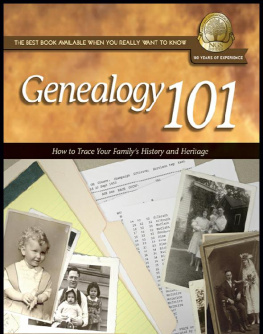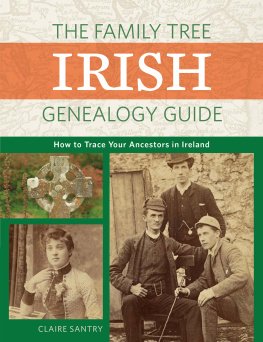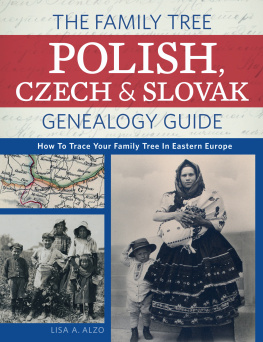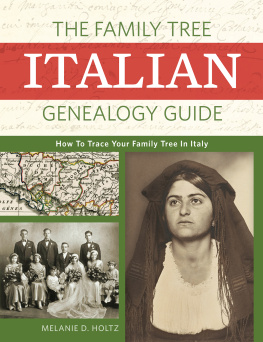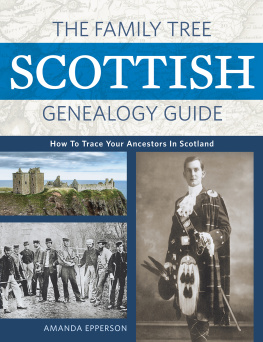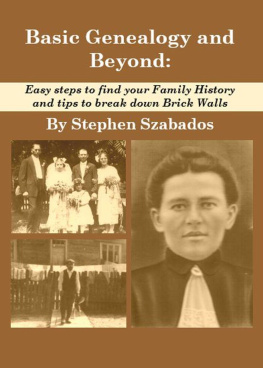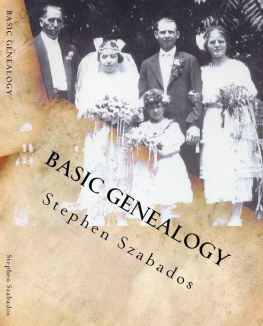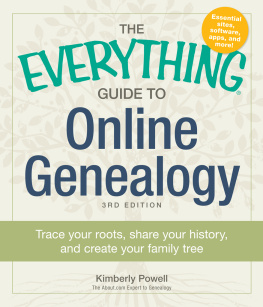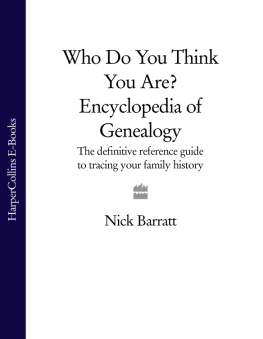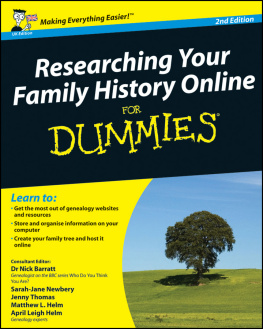Genealogy 101
How to Trace
Your Familys History
and Heritage

Barbara Renick
Amy Johnson Crow, CG
Series Editor
Rutledge Hill Press
Nashville, Tennessee
A Division of Thomas Nelson, Inc.
www.ThomasNelson.com
Copyright 2003 by National Genealogical Society and Barbara Renick.
All rights reserved. No portion of this book may be reproduced, stored in a retrieval system, or transmitted in any form or by any meanselectronic, mechanical, photocopy, recording, or any otherexcept for brief quotations in printed reviews, without prior permission of the publisher.
Published by Rutledge Hill Press, a Division of Thomas Nelson, Inc., P.O. Box 141000, Nashville, Tennessee 37214.
Some material in this publication is reproduced by permission of The Church of Jesus Christ of Latter-day Saints. In granting permission for this use of copyrighted material, the Church does not imply endorsement or authorization of this publication.
The following items mentioned in this book are registered trademarks or service marks: Adobe Acrobat Reader, Allen County Public Library Foundation, American Spirit, Ancestral File, Ancestral Quest, Ancestry World Tree, Ancestry.com Ancestry.com, Association of Personal Historians, Association of Professional Genealogists (APG), Backflip.com, Board for Certification of Genealogists (BCG), Broderbund, Calendar Zone, Certified Genealogist, CG, Clan Hanna-Hannah-Hannay, U.S.A., Cyndis List, Descendants of the Illegitimate Sons and Daughters of the Kings of Britain, Evertons Family History Magazine, Family History Centers, Family History Documentation Guidelines, Family History Library, Family Tree Magazine, Family Tree Maker, FamilyTreeDNA, GEDCOM, GENDEX, Genealogical Publishing Company, Inc., Genealogy.com, Genes and Things, Inc., Genetica DNA Laboratories, Inc., GeneWeaver, GenExchange, GenForum, Google.com, HeritageQuest, Hill Surname DNA Project, Human Genome Project, International Commission for the Accreditation of Professional Genealogists (ICAPGen), Legacy, Lineages (research firm), Mac (as in MacIntosh computer), MapBlast, MapQuest, Microsoft, MyTrees.com, National Genealogical Society, National Society Daughters of the American Revolution, New York Genealogical and Biographical Society, New York Times, Online Roots, Orange County California Genealogical Society, PAF, Pedigree Resource File, Personal Ancestral File, Periodical Source Index, PERSI, Personal Ancestral File, Random Acts of Genealogical Kindness, Reunion, RootsSurname List (now RootsWeb Surname List), RootsWeb.com, Shumway Publishing, Silicon Valley PAF Users Group (SVPAFUG), Society of Descendants of the Colonial Clergy, Sorenson Molecular Genealogy Foundation, Steamship Historical Society of America, The Church of Jesus Christ of Latter-day Saints, The Gold Bug, United Empire Loyalists Association of Canada, William H. Wright Genealogical Society, Inc., World Family Tree, Yahoo!, and Yahoo! Briefcase.
Library of Congress Cataloging-in-Publication Data
Renick, Barbara, 1950
Genealogy 101 : how to trace your family's history and heritage / Barbara Renick.
p. cm. (National Genealogical Society guides) Includes index.
Includes index.
ISBN 1-40160-019-0 (pbk.)
1. Genealogy. 2. United StatesGenealogyHandbooks, manuals, etc.
I. Title. II. Series.
CS16 .R46 2003
929'.1dc21
2002156110
Printed in the United States of America
03 04 05 06 07 5 4 3 2 1
To my family:
past, present, and future

Contents
Appendix: National Genealogical Society
Standards and Guidelines

WITHOUT THE HELP AND ENCOURAGEMENT OF CERTAIN PEOPLE, this book would never have gotten off the ground. First and foremost, recognition must go to Emily Linnell, the genealogy teacher who first taught me the principles upon which I built my own family tree. I hope this book passes on what Emily shared with me. Second, I must acknowledge my right arm and proofreader extraordinaire, Polly Bingham, who magically turned my technical phrases and German syntax into plain English. Thanks go to Beth McCarty, director of the Family History Center in Orange, California. She went above and beyond the call of duty to proofread the entire book and make sure I stated things accurately. A big thank you to Kirk Larsen whose creative ideas, brain storming, and inspiration helped make this book what it is. Last, but not least, a big hug to my husband whose patience knew no bounds during this project.
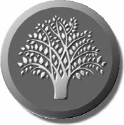
INTRODUCTION
Who Should
Read This Book?
JUST AS I WAS BEGINNING TO WRITE THIS BOOK, A FRIEND CAME TO ME and asked how she could learn to do genealogy. She confessed that she didnt know the first thing about family tree tracing but really wanted to learn. With a little arm twisting, I enlisted her as one of my proofreaders.
When I delivered the first few chapters to her, I could tell she wasnt exactly thrilled at the prospect of reading what she thought was going to be a dry textbook. I made an appointment to meet her again in a weekbut she didnt wait a week. Just a few days later she called me and asked to read more chapters. With excitement in her voice, she compared the manuscript to a novel that she could hardly put down. I wouldnt go that far, but Ive tried to make this book entertaining by weaving in stories of my own family history adventures with my explanations of how to do genealogy.
I had three types of beginners in mind as I wrote this book. It is specifically written for those who have never done any family tree tracing. It is also for those who have already tried tracing their ancestors, but have learned quickly that, as with any puzzle, it helps to have a general idea of how to put the pieces together before you begin. The third group includes those who go on the Internet and find pieces of their family tree, but are not sure about the accuracy of what theyve found (rightly so) and dont know what to do next.
This book is not just for beginners, however. The concepts discussed apply to all levels of researchers, from beginning to advanced. Even if youve been there and done that, you can use this book as a refresher course to remind you of things you have forgotten or to catch up on things you may never have learned.
At first, everyone thinks its easy to ask questions and record your lineage. However, there are areas where experience and skill make a big difference. Recognizing what a family Bible, deed, or census record is trying to tell you seems simple until you learn how easy it is to miss vital details.
By reading this book, youll learn a step-by-step process for getting started on your family tree quickly and easily. Youll also find tips on how to preserve your familys history and heritage. I dont know about your memory, but mine depends on names penciled on the back of family photos, and family relationships recorded in our family Bible and on my computer.
Most people are surprised at the variety of motivations for doing genealogy. Knowing the reasons why others start this hobbyone that for some becomes a passion and others a vocationshould help you clarify your own goals and decide what you want to learn first about your family tree.
Next page
